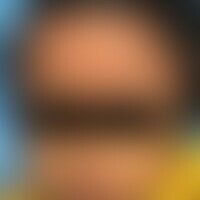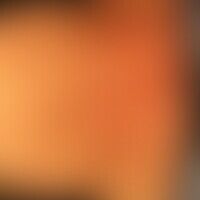Image diagnoses for "Macule"
325 results with 1215 images
Results forMacule

Vitiligo (overview) L80
Vitiligo: therapy-induced (after administration of a checkpoint inhibitor) vitiligo in a patient with malignant melanoma.

Maculopapular cutaneous mastocytosis Q82.2
Urticaria pigmentosa: about 0.5-1.0cm large, disseminated, oval or round, brownish-red spots. only when rubbed, increased reddening of the spots with accompanying itching. also during warm showers or baths increased reddening and clearly palpable elevation of the lesions. Darier phenomenon can be triggered (see neck on the right, here extensive reddening with slight itching, after rubbing this area).

Melanonychia striata L60.8
Melanonychia striata longitudinalis (detailed picture): approx. 0.4 cm wide, dark brown strip of the nail; nail fold with distinct paraungual rim; especially malignant melanoma of the nail root.

Vulvar lichen sclerosus N90.4
Lichen sclerosus of the vulva: pronounced smooth whitish sclerosis of the vulva and penineum; extensive atrophy of the small labia with gaping vagina. 7-year-old girl; changes of the lichen sclerosus for several years.

Hyperpigmentation L81.89
Physiological tanning by solarium, reduced pigmentation at the contact points.
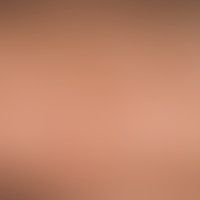
Extrinsic skin aging L98.8
Chronic light damage: poikiloderma after years of excessive UV exposure, including hyperpigmentation, depigmentation and numerous precanceroses of the actinic keratosis type.
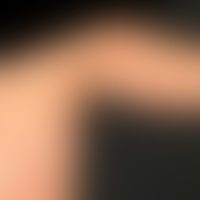
Asymmetrical nevus flammeus Q82.5
Naevus flammeus: congenital, completely symptomless vascular malformation (exclusively capillary malformation) without tendency to tissue hypertrophy.

Drug effect adverse drug reactions (overview) L27.0
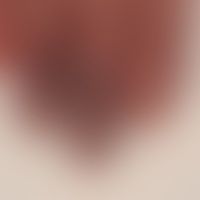
Raynaud's syndrome I73.0
Raynaud's phenomenon:Raynaud's syndrome known for several years. No indication of systemic scleroderma. Here condition after Raynaud's attack with massive blue discoloration of the fingers.

Asymmetrical nevus flammeus Q82.5
Vascular (capillary) malformation (so-called naevus flammeus): Congenital, generalized, spotty erythema from the scalp to the sole of the foot in an 8-year-old boy, developed according to age.

Rosacea erythematosa L71.8
DD: Rosacea erythematosus- here lupus pernio: 63-year-old female patient with reddish-livid plaque of the nose and previously known chronic pulmonary sarcoidosis.
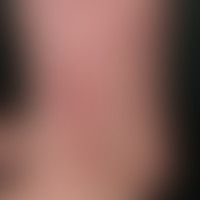
Purpura thrombocytopenic M31.1; M69.61(Thrombozytopenie)
Purpura thrombocytopenic: line shaped (after scratching, as well as after application of a compression bandage) fresh and slightly older skin bleedings (cannot be pushed away diascopically).

Perioral dermatitis L71.0
Dermatitis perioralis, granulomatous type. multiple, chronically dynamic, continuously increasing for 3 months, periorally localized, disseminated, follicular, firm, itching and burning, red, rough, scaly papules, pustules and plaques. months of pre-treatment with corticoid ointments!

Lentigo maligna melanoma C43.L

Purpura fulminans D65.x
Purpura fulminans: Purpura fulminans beginning in the abdominal region in the context of E. coli sepsis in a 55-year-old man (lethal outcome).

Chloasma gravidarum perstans L81.1
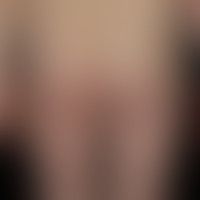
Asymmetrical nevus flammeus Q82.5
Nevus flammeus: congenital, asymmetrically arranged, non-syndromal (no tissue hypertrophy, no orthopedic malposition) large-area (telangiectatic) vascular nevus; characteristic are the scattered borders of the red spots.

Hyperpigmentation postinflammatory L81.0

Lupus erythematosus acute-cutaneous L93.1
lupus erythematosus acute-cutaneous: acute symmetrical skin symptoms after sun exposure, which have persisted for 1 week. pat. was previously free of skin symptoms. clear feeling of tension in the skin. laboratory: ANA+; anti dsDNA antibodies neg.; anti-Ro antibodies positive.
